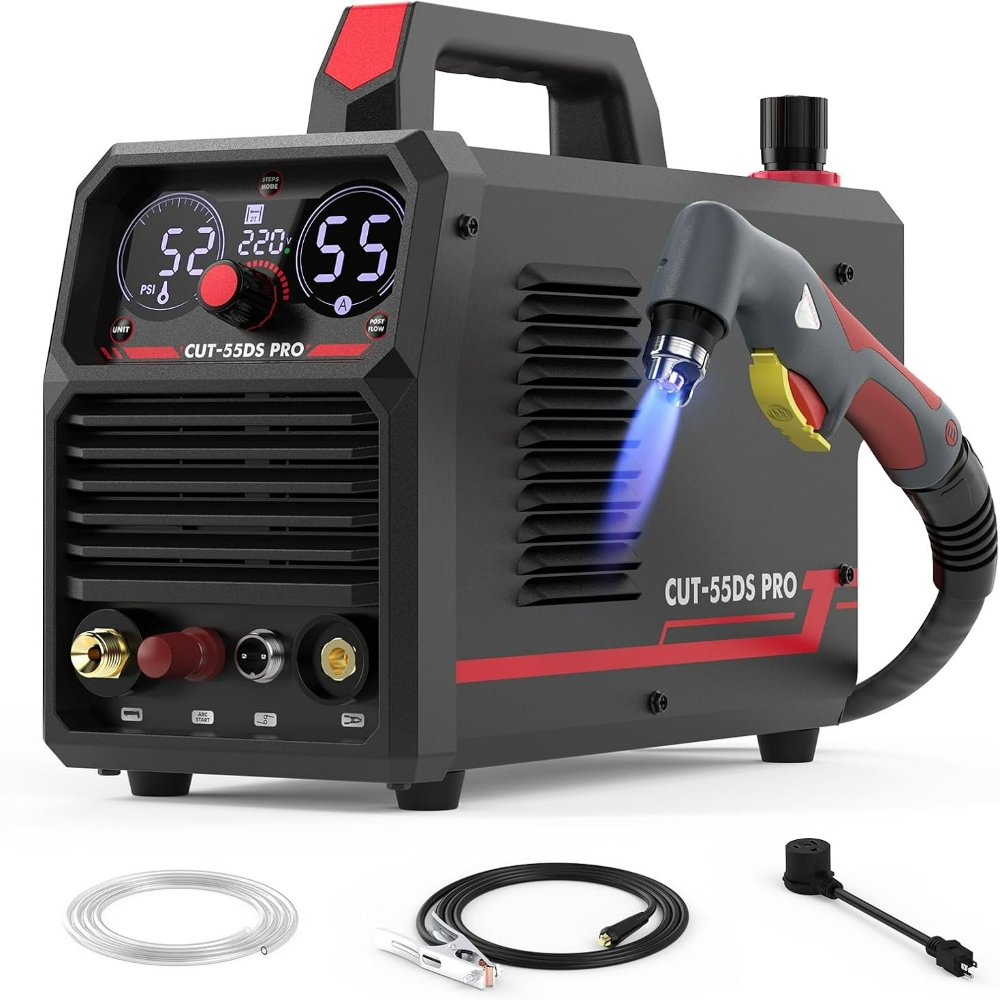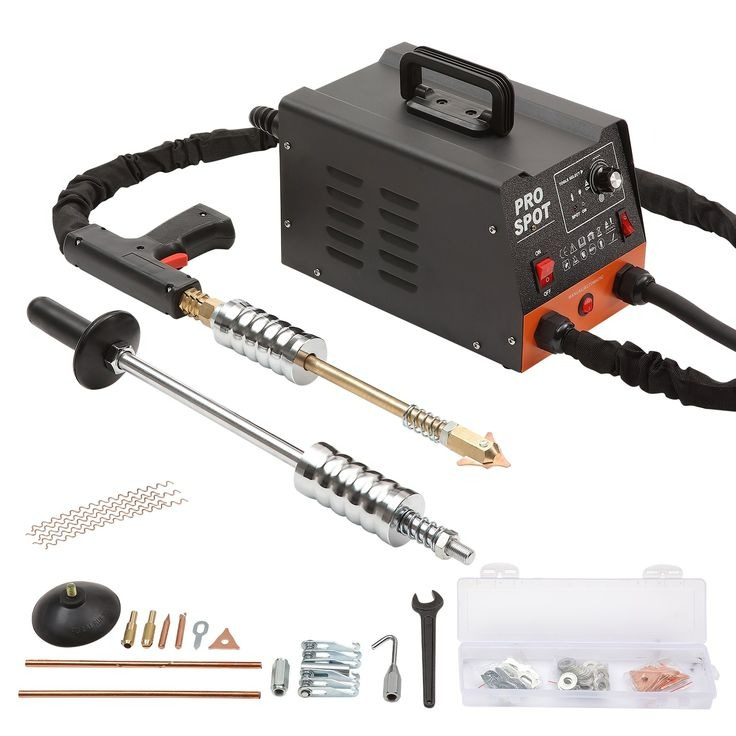The Advantages of Arc Welding Machine in Metal Fabrication
Introduction to Arc Welding Machines
Arc welding machines are crucial in metal fabrication. They use electric arcs to fuse metals, a process pivotal for making strong structures. Complexity and sophistication may vary, but their core functionality remains the same: joining metals with precision.
Key Components and Functions
An arc welding machine primarily consists of a power source, electrodes, and shielding mechanisms. The power source can be either AC or DC, affecting the arc’s stability and welding quality. Electrodes, serving as conductors, come in consumable or non-consumable forms, and shielding, via gases or flux, protects the weld from impurities.
The Role of Arc Welding in Modern Fabrication
In today’s industries, arc welding machines are indispensable. They’re essential for constructing buildings, vehicles, and more. Skilled welders use these machines to craft durable seams, combining human expertise with technological advances. Whether in high-rise construction or delicate medical devices, arc welding proves to be an irreplaceable tool for fabrication.
![]()
Working Principle of Arc Welding Machines
Arc welding machines are key in metal joining. They utilize an electric arc, which forms between an electrode and metal workpiece. This arc melts the metal, allowing for bonding.
The Electric Arc Formation
In arc welding, an electric arc formation is crucial. It happens when a strong electric current passes between two metal points. The gap sparks an arc, heating and melting the metal.
Power Sources: AC and DC Current
Arc welders can use AC or DC power. AC is common, but DC power provides a more stable arc. This stability is beneficial for many welding tasks and materials.
Role of Electrodes in Arc Welding
Electrodes in arc welding machines are conductors. They can be consumable, melting into the weld, or non-consumable, used with added filler metal. They are central to the process, forming and maintaining the arc.
Types of Arc Welding Techniques
Arc welding offers various techniques, each suited for different tasks and materials. Understanding these methods helps choose the right one for the job.
DC Metallic Arc Welding
DC metallic arc welding uses a direct current to provide a stable arc. This technique achieves uniform welds and is great for many metals. It’s widely used in heavy-duty industries.
AC Metallic Arc Welding
AC metallic arc welding uses alternating current, ideal for materials like aluminum. It produces strong joints and works well with thicker metals, often found in construction.
Shielded Metal Arc Welding (SMAW)
SMAW, or stick welding, involves a coated electrode that melts into the weld. It protects the weld from contaminants, making it versatile for many environments.
Gas Tungsten Arc Welding (GTAW)
GTAW, also known as TIG welding, uses a non-consumable tungsten electrode. This method is for high-quality welds on thin materials or where precision is key.
Flux-Cored Arc Welding (FCAW)
FCAW combines aspects of SMAW and MIG welding. It’s known for deep penetration and is useful when welding thick materials or outdoors where wind might disperse shielding gas.
![]()
Advantages of Using Arc Welding
Arc welding machines bring key advantages to metal fabrication. Their unique qualities make them preferred tools across various industries.
Speed and Efficiency in Welding
Arc welding stands out for its speed. Its electric arc produces heat fast, melting metals quickly for efficient welding. This quick action boosts productivity, saving valuable time on projects.
Versatility in Material and Position
This method works with many metals, including steel and aluminum. It adapts to any welding position, handling flat, vertical, or overhead tasks with ease.
Superior Temperature Control
Arc welding allows for precise heat management. Welders can adjust the arc to suit different metal types and thicknesses. Getting the right heat ensures strong, consistent welds.
Cost-Effectiveness of Arc Welding
Arc welding equipment is affordable compared to other methods. Low-cost setup and maintenance appeal to businesses looking to save money. This cost efficiency helps companies control project expenses.
Applications of Arc Welding in Industry
Arc welding plays a key role across various sectors. Its ability to join metals securely is in high demand for multiple applications.
Construction and Infrastructure
In construction, arc welding machines are vital. They ensure that metal structures in buildings and bridges are strong and durable. Welders create solid welds able to support massive weights and withstand weather impacts.
Automotive Manufacturing
The automotive industry relies on arc welding. It’s used to assemble car frames and engines. This creates vehicles that are safe and robust. Arc welders can work with different metals, making them ideal for car parts.
Shipbuilding and Marine Applications
Arc welding is crucial in shipbuilding. It builds hulls and decks that resist the powerful forces of the ocean. The strength of arc welding provides safety to ships and their crews at sea.
Repair and Maintenance Operations
For repair and maintenance, arc welding is a go-to method. It fixes machinery, equipment, and infrastructure effectively. The process is quick and restores items to their original condition, extending their service life.
Using arc welding machines is advantageous for their speed, versatility, and quality. However, proper training and safety measures are crucial. This ensures that welds are performed correctly and safely every time.
![]()
Overcoming the Disadvantages
While arc welding machines offer numerous benefits, they come with certain disadvantages that require careful management. By understanding these downsides, professionals can take steps to mitigate them effectively, ensuring that the advantages of arc welding are maximized.
Addressing Skill Requirements
Arc welding demands skilled operators for achieving high-quality welds. To address this:
- Training programs should be robust, combining theory with hands-on practice.
- Certifications can help in assessing and verifying welder’s competencies.
- Continuous training updates ensure welders stay current with new technologies and standards.
By investing in training and certification, we ensure safe and effective welding operations.
Adapting to Different Metal Types
Different metals require specific welding approaches:
- For reactive metals like aluminum, pre-welding treatments may be necessary.
- Specialized electrodes and settings are essential for thin metals to prevent burn-through.
- Research on metal properties helps in choosing the right welding parameters and techniques.
Understanding metal characteristics enables the correct adaptation of the welding process.
Safety Measures and Precautions
Safety is paramount in welding. To guarantee safety:
- Protective gear, like helmets and gloves, should always be worn.
- Adequate ventilation must be present to remove harmful fumes.
- Regular equipment inspections prevent accidents from faulty machinery.
Through rigorous safety practices, we protect workers and maintain high-quality welds.
Choosing the Right Arc Welding Machine
Choosing the proper arc welding machine is vital for successful metal fabrication. To select the best fit, several factors come into play.
Criteria for Selecting an Arc Welding Machine
When selecting an arc welding machine, consider the following criteria:
- Power Requirements: Match the machine’s power source (AC or DC) with your needs.
- Material Type: Choose a machine compatible with the metals you plan to weld.
- Welding Conditions: Look for models that suit your typical welding environment.
- Welder Skill Level: Ensure the machine’s complexity is appropriate for the operator.
- Portability Needs: If mobility is key, opt for lightweight and compact machines.
- Duty Cycle: Check that the machine can handle the duration and frequency of use.
- Budget Constraints: Balance features with what you’re willing to spend.
By carefully evaluating these points, you can select an arc welding machine that meets your specific requirements, ensuring quality and efficiency.
Top Suppliers of Arc Welding Machines in Nigeria
In Nigeria, finding a reliable arc welding machine supplier is crucial. Here are top suppliers in the market:
- Tikweld Welding Supplies and Services: Known for high standards and robust support.
- GZ Industrial Supplies: Offers a broad selection and top-notch customer service.
- Epoxy Oilserv Nigeria Limited: Delivers quality machines with a commitment to excellence.
- Hellog Energy: Provides a competitive range of products with a focus on customer satisfaction.
These suppliers have established a reputation for providing durable machines, essential services, and support. This ensures you can count on their equipment for your fabrication needs. When choosing a supplier, also consider their accessibility, after-sales service, and availability of parts.

